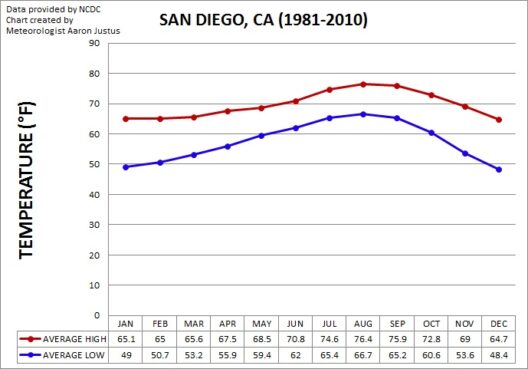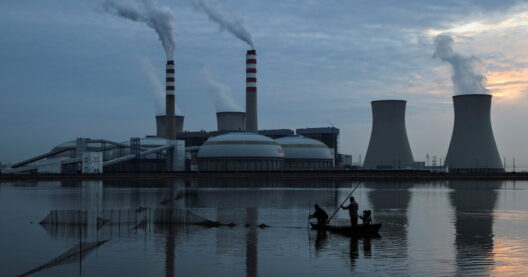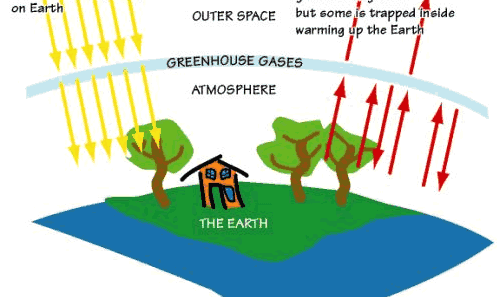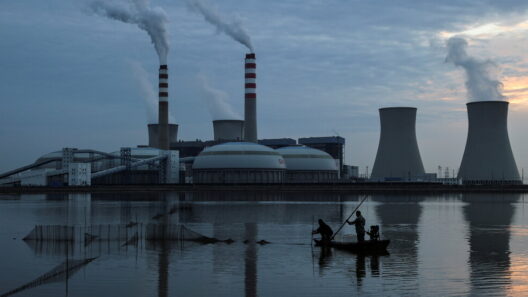In our quest for a better understanding of the climate crisis, one cannot ignore the profound impact that land use changes have on our environment. Forests and farmland represent two pivotal aspects of our ecosystem, yet they exist in a delicate balance. When one is sacrificed for the other, the repercussions echo throughout the planet. What if we could reverse that trend? This prompts a quirky yet challenging question: Can we restore ecosystems by reimagining how we utilize our land?
To appreciate the link between forests and farmland, one must first understand what forests provide. They are not merely collections of trees; they are complex ecosystems teeming with biodiversity. Forests capture carbon dioxide, help regulate temperature, and maintain the water cycle. Importantly, they also serve as a habitat for countless species that contribute to ecological balance. When trees succumb to logging or conversion into agricultural land, the consequences are catastrophic—not just locally, but globally. Carbon sequestered in trees is released back into the atmosphere, exacerbating global warming. Therefore, each year, as we raze forests to meet the demands of agriculture, we compromise the very fabric of our climate.
The irony lies in the fact that converting forests to farmland is often viewed as a necessary evil for food production. The world’s population is projected to reach nearly 10 billion by 2050, escalating the demand for food. Yet, the challenge is not merely to produce food but to do so sustainably. Intensive agriculture can lead to soil degradation, loss of fertility, and an increase in greenhouse gas emissions. Thus, land use change can prompt a self-perpetuating cycle of environmental harm. As farmland expands, the forests contract, and the carbon footprint balloon with each crop cultivated.
Moreover, not all agriculture is created equal. Conventional farming practices frequently rely on synthetic fertilizers and pesticides, which contribute further to the depletion of natural resources and toxins in ecosystems. A critical question arises: can regenerative agricultural practices mitigate these environmental costs? These methods focus on building soil health, enhancing biodiversity, and restoring ecosystems. Such practices involve crop rotation, agroforestry, and organic farming, all of which could provide a multifaceted response to the climate crisis while accommodating our need for food.
The interplay between deforestation and agriculture also unveils the socioeconomic dimensions of land use changes. Many developing nations often view forested land as an untapped resource ripe for agriculture. Pressure to maximize land use often comes from economic imperatives, including rural poverty and the need for income. This creates a paradox. While individuals are attempting to improve their economic situations by converting forests into farmland, they may unwittingly harm the planet’s climate stability. This interconnectedness is a key element in creating equitable solutions to land use challenges.
Furthermore, the global market exacerbates this issue. Instantaneous demand for products such as palm oil, soy, and beef can lead to the devastating deforestation of biodiverse regions. Countries specializing in agriculture may prioritize short-term financial gain over long-term sustainability, viewing forests simply as land to be converted. The resultant loss of forests contributes significantly to greenhouse gas emissions and climate vulnerability. To counter this, an international framework of policies promoting sustainable practices is essential. Stricter regulations on land use and financial incentives for sustainable agriculture could foster a global movement toward a harmonious equilibrium between forests and farmland.
It is essential to recognize that reforestation and afforestation can play a vital role in reversing some of the damage caused by these land use changes. By restoring ecosystems, we can enhance carbon sequestration efforts, combat soil erosion, and revive local wildlife populations. Organizations worldwide are engaging in reforestation initiatives, yet these efforts must be broadly replicated and adequately funded. A call to action arises: can communities band together to not only conserve forests but actively participate in restoration efforts?
In examining innovative approaches, agroforestry presents a compelling solution. This land management system integrates trees and shrubs into crop and livestock farming. By adopting agroforestry, farmers can protect natural habitats while simultaneously producing food. This method not only sequesters carbon but enhances biodiversity, improves soil quality, and increases resilience to climate change impacts. One might ponder: Could implementing agroforestry be a panacea for the land use dilemma?
The intricate relationship between forests and farmland emphasizes the dire consequences of unsustainable land practices. As we confront the climate crisis, the question should not simply be how we can increase agricultural yield, but how we can redefine our relationship with nature. A shift in discourse toward sustainable, regenerative practices could potentially lead to a healthier planet.
As society forges ahead, it is crucial to recognize the vital role of education and awareness. Communities must be informed about sustainable practices and their impacts on both food security and climate. By fostering a culture of sustainability, we can inspire individuals to confront the challenges of land use and advocate for policies that bridge the gap between agricultural demand and environmental stewardship.
In summary, the link between forests to farmland is intricately woven into the fabric of our climate crisis. The choices we make today will define the ecological landscape tomorrow. A collaborative effort between policymakers, farmers, conservationists, and consumers is essential. Can we envision a future where forests thrive alongside sustainable farmland? The challenge is real, but the potential rewards are profound. It beckons us to address the existential question: How do we cultivate a balance between nourishment and nature?





